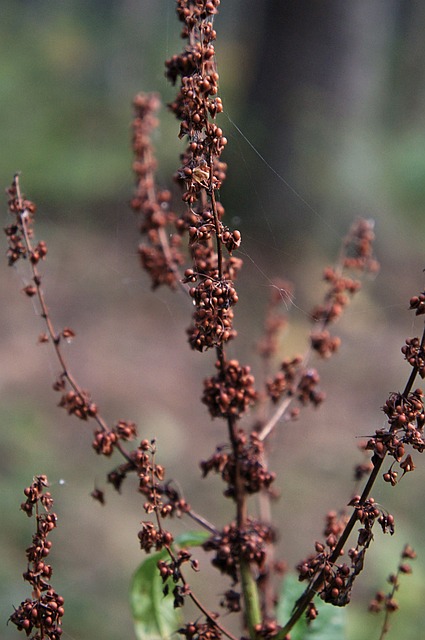Native to eastern Europe and western Asia, yellow dock or curly dock, a perennial broad-leaf plant, has naturalized throughout North America. It is considered a noxious weed in some overgrazed agricultural areas where cattle and sheep graze because its leaves contain oxalic acid which can be toxic to livestock when large amounts are ingested. There are over 200 species in the Rumex genus and they can be found on every continent, including Antarctica.
Yellow Dock – Edible Wild Herb
The species of docks and sorrels have a long history of use by humans. In England, broad-leaf dock leaves were once used to wrap and protect butter.
Small amounts of nutritious young leaves can be added to salad blends; older leaves are cooked and eaten like spinach. Because of the high levels of oxalic acid, large amounts of the leaves should not be eaten. The seeds are protein-rich and their abundance per plant (up to 40,000) makes them ideal for drying and grinding into flour or left whole and added to baked goods.
Wildcrafting yellow dock requires knowledge of the location since it often germinates in disturbed soil.It’s best to grow your own. It’s easy to grow and allows you to learn about the cycle of the plant in your area.
Yellow Dock – Bitter Alterative
The long yellow taproot is bitter and is used both internally and externally. As a root, it is traditionally harvested in the fall, after it has gone to seed, cut into small pieces while fresh and then prepared as a tea, decoction, tincture, infused vinegar, poultice, and a syrup.
Yellow dock is used to treat a variety of skin complaints: including infection and boils. But it is best known as a bitter alterative that promotes healthy digestion.
I use Yellow Dock for building iron safely and naturally without side effects of supplements.
Yellow dock is regularly used as an herbal treatment for iron deficiency anemia.
Yellow dock has high levels of iron and is a traditional remedy for pregnant women who may experience both anemia and constipation. Experienced herbalists suggest that yellow dock may help to release iron that is stored in the liver.
Iron Promoting Syrup
This tonic syrup is especially useful for women during their menstrual cycle, for women during pregnancy, people with low levels of iron due to diet, and for those times in our lives when we feel depleted.
- 1/2 cup of each: dandelion root, yellow dock root
- 1 cup of each: hawthorn berry
- 1 cup of each: nettle leaves
- 2 teaspoons of cinnamon chips (ginger is a nice spicy alternative for winter months)
- 1 cup blackstrap molasses
Add roots, berries, and cinnamon to a large pot. Add 3 quarts of water to the pot and partially cover. Simmer for 2 hours until reduced by half.
Remove from heat and stir in nettle leaves, and blackstrap molasses. Cover and allow to sit for at least 4 hours (overnight is better). Strain out herbs. Bottle and store in the refrigerator for up to 2 months. Take 2 teaspoons per day. This recipe makes one quart. I like to add this to sweeten my morning Earl Grey.
Wishing you Happiness and Health,
Chrystal Cocek
Loveland, Colorado Herbalist
Integrated Earth Medicine

